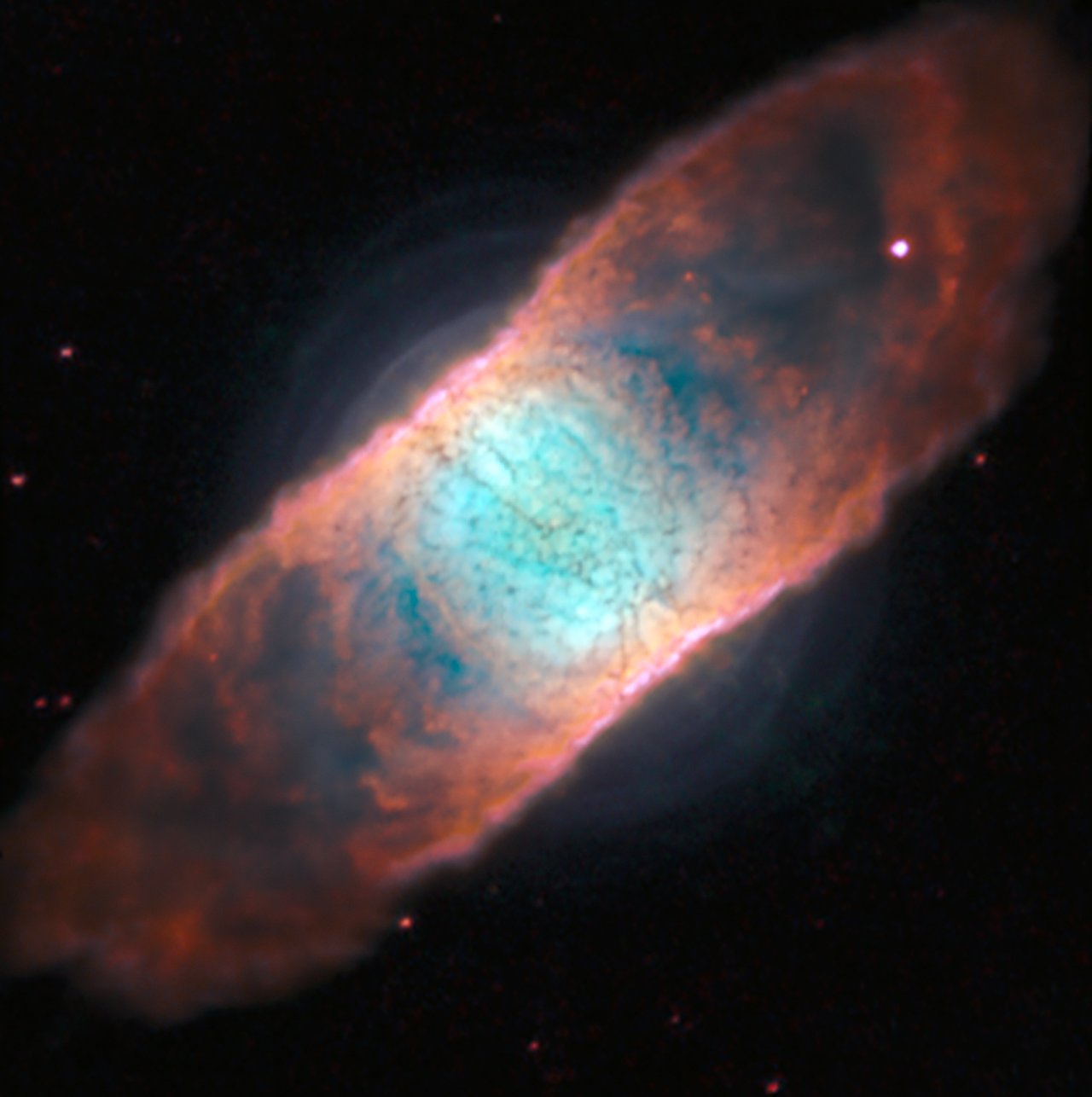ESO Organization Release | VLT | MUSE | AOF | 2017 Aug 02
Spectacular improvement in the sharpness of MUSE images
The Unit Telescope 4 (Yepun) of ESO’s Very Large Telescope (VLT) has now been transformed into a fully adaptive telescope. After more than a decade of planning, construction and testing, the new Adaptive Optics Facility (AOF) has seen first light with the instrument MUSE, capturing amazingly sharp views of planetary nebulae and galaxies. The coupling of the AOF and MUSE forms one of the most advanced and powerful technological systems ever built for ground-based astronomy.
The Adaptive Optics Facility (AOF) is a long-term project on ESO’s Very Large Telescope (VLT) to provide an adaptive optics system for the instruments on Unit Telescope 4 (UT4), the first of which is MUSE (the Multi Unit Spectroscopic Explorer) [1]. Adaptive optics works to compensate for the blurring effect of the Earth’s atmosphere, enabling MUSE to obtain much sharper images and resulting in twice the contrast previously achievable. MUSE can now study even fainter objects in the Universe. ...
Following a battery of tests on the new system, the team of astronomers and engineers were rewarded with a series of spectacular images. Astronomers were able to observe the planetary nebulae IC 4406, located in the constellation Lupus (The Wolf), and NGC 6369, located in the constellation Ophiuchus (The Serpent Bearer). The MUSE observations using the AOF showed dramatic improvements in the sharpness of the images, revealing never before seen shell structures in IC 4406 [2].
The AOF, which made these observations possible, is composed of many parts working together. They include the Four Laser Guide Star Facility (4LGSF) and the very thin deformable secondary mirror of UT4 [3] [4]. The 4LGSF shines four 22-watt laser beams into the sky to make sodium atoms in the upper atmosphere glow, producing spots of light on the sky that mimic stars. Sensors in the adaptive optics module GALACSI (Ground Atmospheric Layer Adaptive Corrector for Spectroscopic Imaging) use these artificial guide stars to determine the atmospheric conditions.
One thousand times per second, the AOF system calculates the correction that must be applied to change the shape of the telescope’s deformable secondary mirror to compensate for atmospheric disturbances. In particular, GALACSI corrects for the turbulence in the layer of atmosphere up to one kilometre above the telescope. Depending on the conditions, atmospheric turbulence can vary with altitude, but studies have shown that the majority of atmospheric disturbance occurs in this “ground layer” of the atmosphere. ...
The corrections applied by the AOF rapidly and continuously improve the image quality by concentrating the light to form sharper images, allowing MUSE to resolve finer details and detect fainter stars than previously possible. GALACSI currently provides a correction over a wide field of view, but this is only the first step in bringing adaptive optics to MUSE. A second mode of GALACSI is in preparation and is expected to see first light early 2018. This narrow-field mode will correct for turbulence at any altitude, allowing observations of smaller fields of view to be made with even higher resolution. ...
One of the main science goals of the system is to observe faint objects in the distant Universe with the best possible image quality, which will require exposures of many hours. ...
Furthermore, MUSE is not the only instrument that will benefit from the AOF. In the near future, another adaptive optics system called GRAAL will come online with the existing infrared instrument HAWK-I, sharpening its view of the Universe. That will be followed later by the powerful new instrument ERIS. ...




